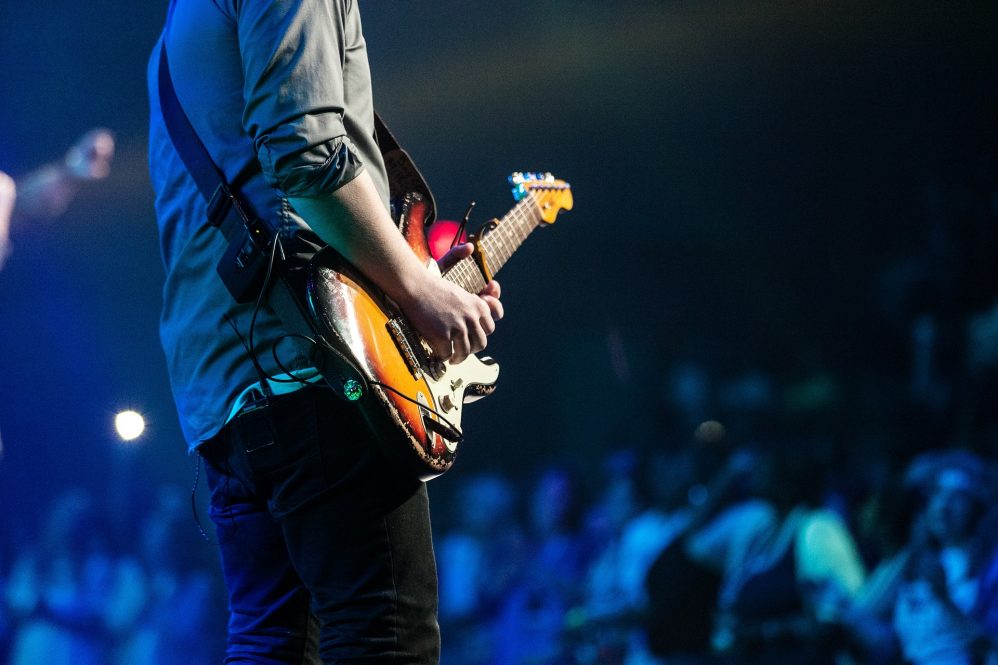As a child growing up in Germany, Erika Skoe taught herself to play German songs on the piano before she was comfortable speaking the language. Skoe, now an associate professor of speech, language, and hearing sciences at UConn and self-described lapsed musician has made a career studying hearing and brain function in people young to old, with a special focus on language and music.
Previous research has shown that regular exposure to noise may accelerate brain aging. But other work shows older musicians’ brain and cognitive function resembles that of somebody much younger. To Skoe, these independent lines of research seemed at odds: if noise exposure is harmful to the brain, why are older musicians neurologically sharper than non-musicians, given that musicians are at higher risk of experiencing dangerous noise levels?
In a new $1.6 million grant from the National Institutes of Health, titled “The Noisy Life of the Musician: Implications for Healthy Brain Aging,” Skoe will lead an effort to reconcile the health benefits and hazards of being a musician and their interplay as people age. This study was funded through the NIH Sound Health initiative, a program supporting research on health applications of music.
“The popular press is riddled with claims about the anti-aging benefits of playing a musical instrument,” Skoe says. “Not all are well-supported by scientific evidence, and some claims are even contradictory. By carefully controlling factors that lead to poorer or better brain health at an earlier age, we hope to reconcile such claims in a large sample of musicians and non-musicians.”
Nearly 15 years ago, Skoe and a team of collaborators found that one benefit of musicianship is being able to understand speech better in noisy environments, like restaurants. Some researchers replicated this finding, but not others. This led Skoe to ask if musicians’ noise exposure levels could account for these inconsistent results.
Skoe’s lab, as a part of a collaboration with Jennifer Tufts, recruited college marching band participants, a group regularly exposed to loud noise, and outfitted them with small wearable devices that measured their noise exposure levels over a week.
“We found that consistent noise exposure diminished the benefits of musicianship”, says Skoe.
In this new study, Skoe will build on this research, adding questions about brain aging and whether the benefits of early-life musical training persist even for those who no longer play. The study will include college-aged musicians, middle-aged musicians, ex-musicians who played as children, and two non-musician control groups.
Skoe has assembled a multidisciplinary team of UConn colleagues: Professor Jennifer Tufts and Assistant Processor Jennifer Mozeiko in the Department of Speech, Language, and Hearing Sciences; Professor George Kuchel, director of the UConn Center for Aging; and Ofer Harel, associate dean of research and graduate affairs in the College of Liberal Arts and Sciences and professor of statistics.
We’re trying to avoid assumptions about when and where people are exposed to noise. — Erika Skoe
Skoe’s team will gather data on noise exposure levels for an entire week along with journals participants will keep, and interviews about past exposure to noise, to generate a profile of participants’ exposure to noise. This is a novel approach as research in the field typically only measures noise exposure when musicians are making music.
“We’re trying to avoid assumptions about when and where people are exposed to noise by having them wear a sound recording device for a full week,” Skoe says. “We all experience bouts of noise during the day— at the hairdresser, going to a busy restaurant, walking by a leaf blower. But we really don’t have comprehensive data to understand the totality of noise a person experiences over their lifetime”
Participants will undergo comprehensive hearing assessments to measure not only basic hearing, but also “hidden” loss that is not visible on standard clinical tests of hearing.
The researchers will also put sensors on participants’ heads to record electrical brain activity in response to sound. This measure is more likely to be sensitive to early stages of auditory brain aging, which may be present in middle-age, a time when people often start complaining of difficulty listening in noise.
“The earlier signs of brain aging are spotted, the sooner supportive intervention efforts can be put in place to prevent more significant declines in health and wellness,” Skoe says. “This motivates our focus on middle age.”
As a unique part of this project, Skoe assembled an advisory panel of music professionals including a Grammy-award-winning music producer, a conductor, music educators, a music therapist, and an audiologist serving the hearing health needs of musicians. This panel will provide feedback to help the researchers develop a fuller picture of the real-world implications of the work for different types of musicians, create more public awareness about how music might improve health, and how to arm musicians with knowledge about when they might be hitting risky levels of noise.
If study outcomes point to the protective role of musicianship on preventing age- and noise-related loss of brain function, it will raise the important public health question of how other noise-exposed populations might share these benefits.
“Can fast-acting therapeutic treatments be developed that mimic the benefits of long-term musical training?” Skoe says. “I see that as the holy grail of this line of work.”



